Cloudless in the Yellow (Huangshan) Mountains
3 Comments
The scenery of steep peaks and ancient pine trees emerging out of mist and floating above a sea of clouds is an iconic subject in Chinese representations of the landscape. Since the Tang Dynasty around the 8th century, the inspiration for these paintings is the most famous of the Chinese mountains, Mount Huangshan, or Yellow Mountains, which has been called ‘the loveliest mountain of China’. Does the reality live up to those images?
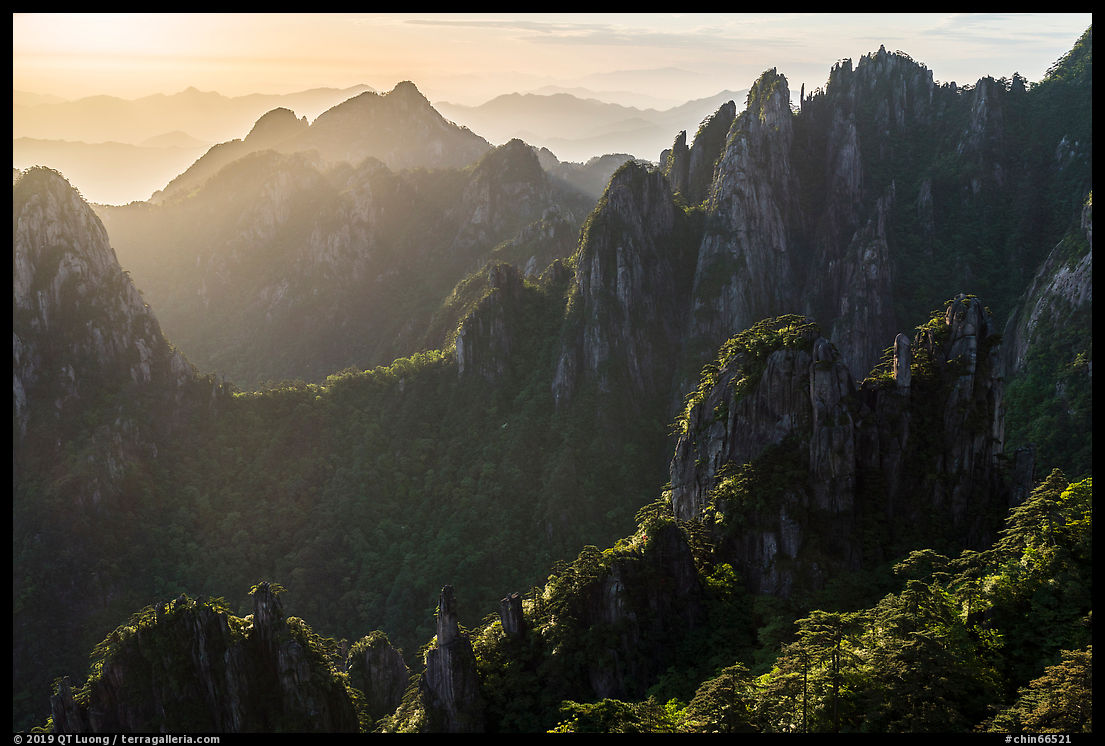
Mount Huangshan is a granite massif consisting of 36 separate peaks, culminating above 1,800 meters. It is located about 450 km east of Shanghai and 250 km east of Hangzhou. In the past, long-distance bus travel was necessary, but a few years ago, high-speed train service and flights to the gateway town of Huangshan City have become available. No private vehicle is allowed into Mount Huangshan scenic area, instead, you board a bus that takes you to a trailhead or cable-car station.
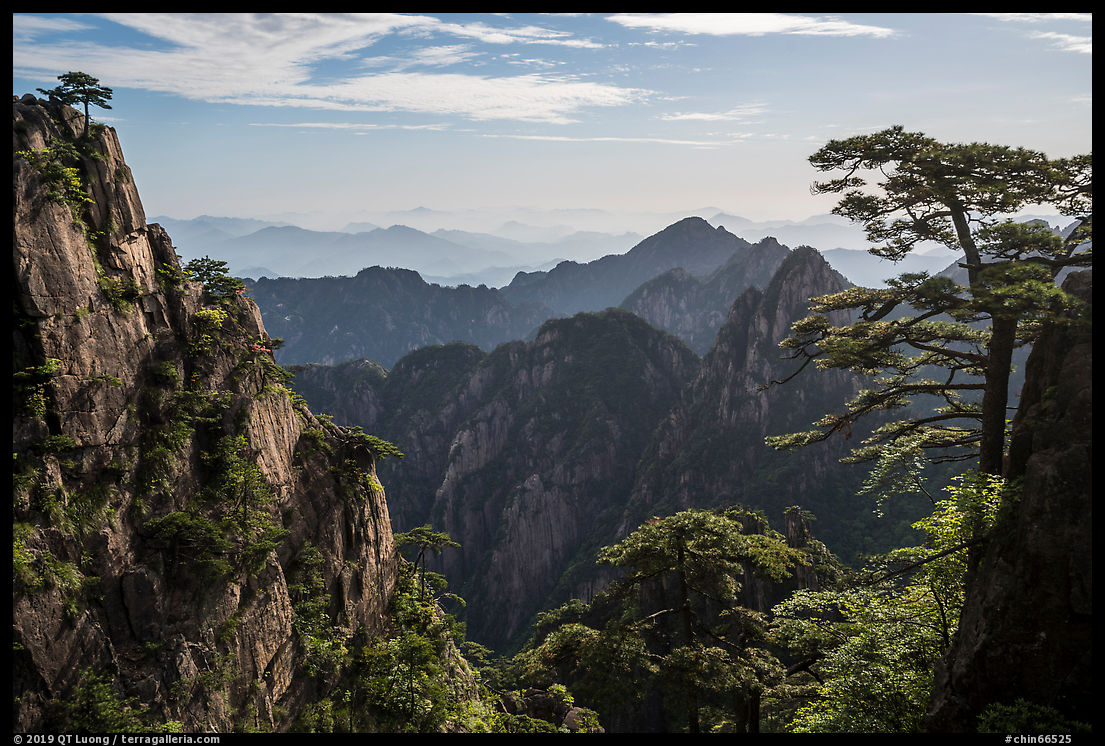
Even though the cable cars save you about 2-3 hours of steep walking, once you get to the top, you’ll have to do a fair amount of walking to explore the complex of peaks, and most of the trails are up and down with steep stairs. From the cable-car station, it took an hour to walk to our hotel, so I was glad that I packed light. Most visitors stay at the base of the mountain, where hotels are affordable, and visit the mountain as a day trip. However, there are a few hotels located on the top of the mountain. Staying there let you to easily catch sunrise and sunset and enjoy some relatively quieter hours, but this comes at a cost. For a party of three, the least expensive room we were able to find at the Beihai Hotel cost over $400 (for comparison, a nicer double room within walking of the Bund in Shanghai cost $75) and meals were quite pricy.
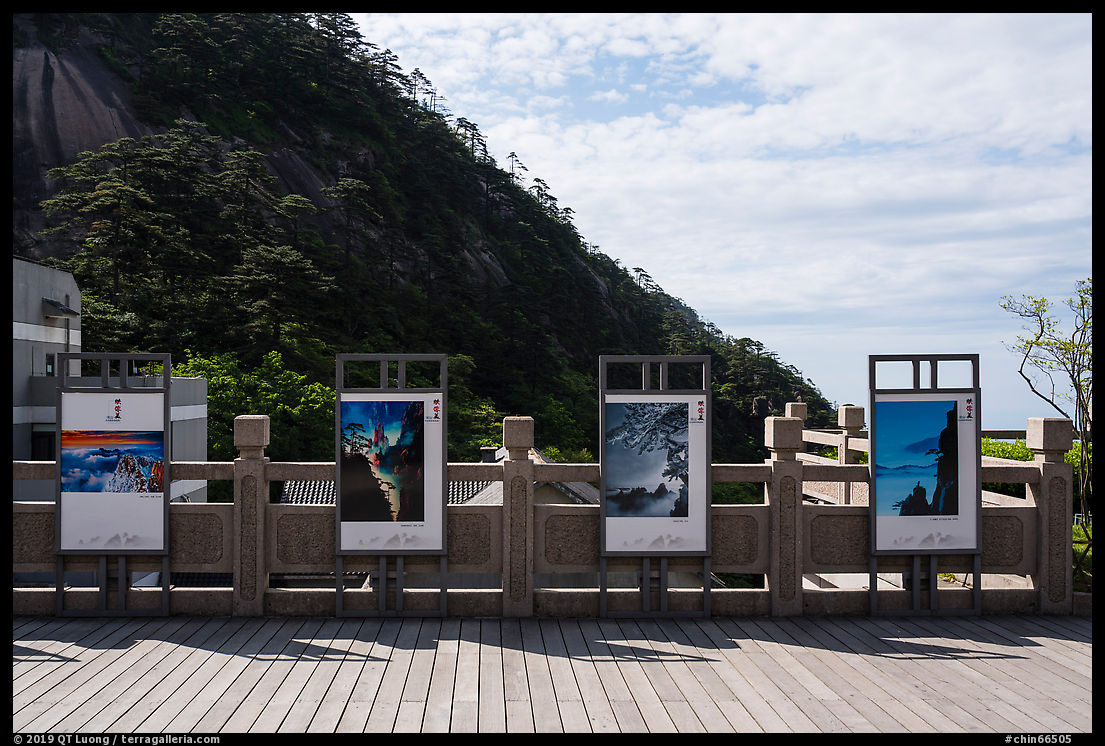
From a photographic point of view, the key to great photographs on Mount Huangshan is the right amount of legendary low clouds. This is one place where weather is the subject. Inside and near the hotels, I saw many photographs displayed. Hardly any of them did not feature low clouds or mist. Without them, the mountain just doesn’t have the same allure and mystery, however, when the cloud cover is too dense, you don’t see anything at all. It usually takes more than a day to observe the right conditions. Low clouds form during or after rainy days. The area is very moist, and I saw a sign indicating that they were present on average 3 out of 4 days. The most favorable period is September to May, as summer tends to be drier. I visited at the beginning of May.
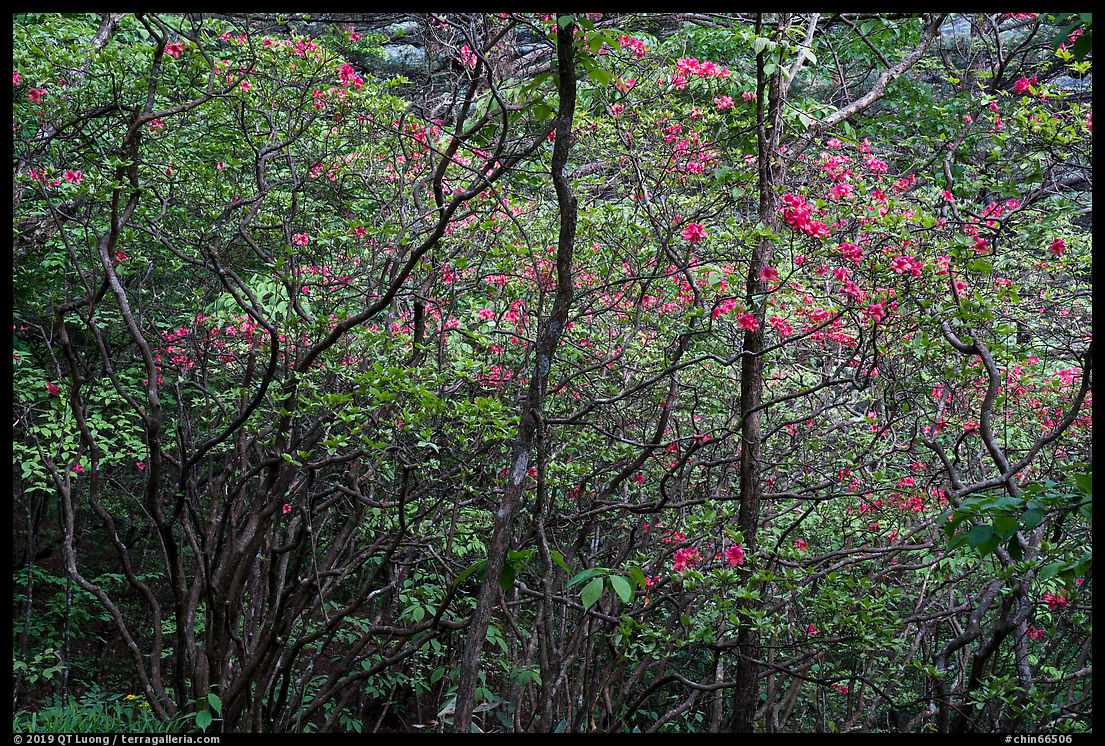
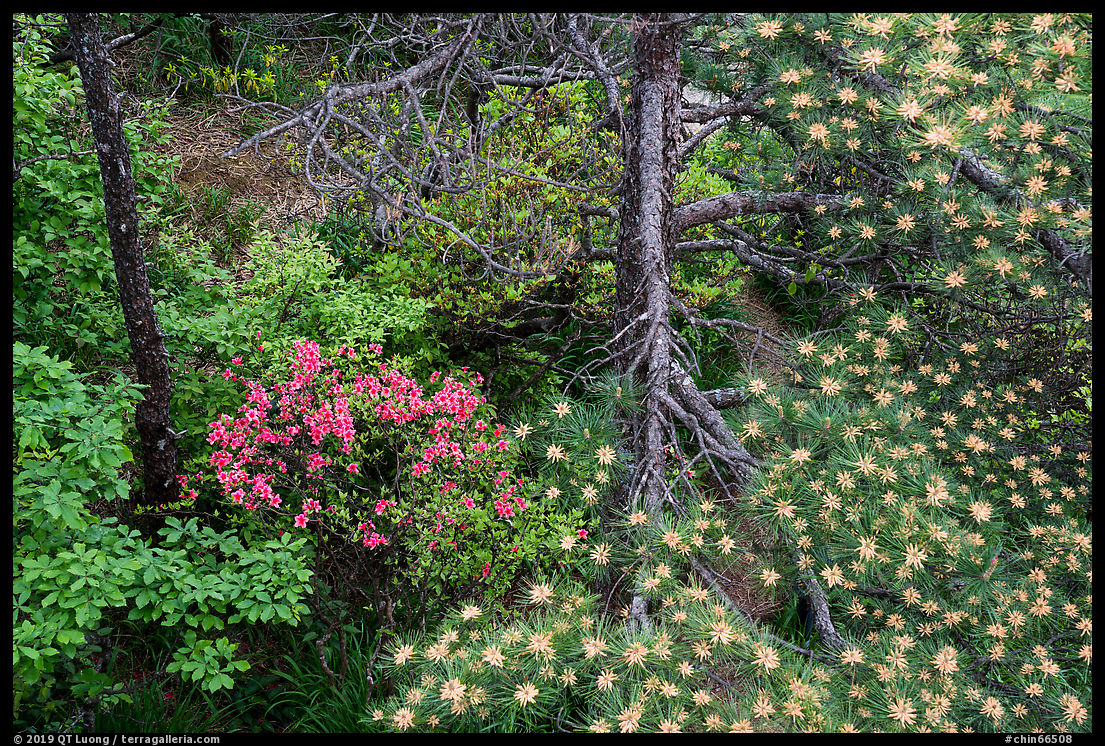
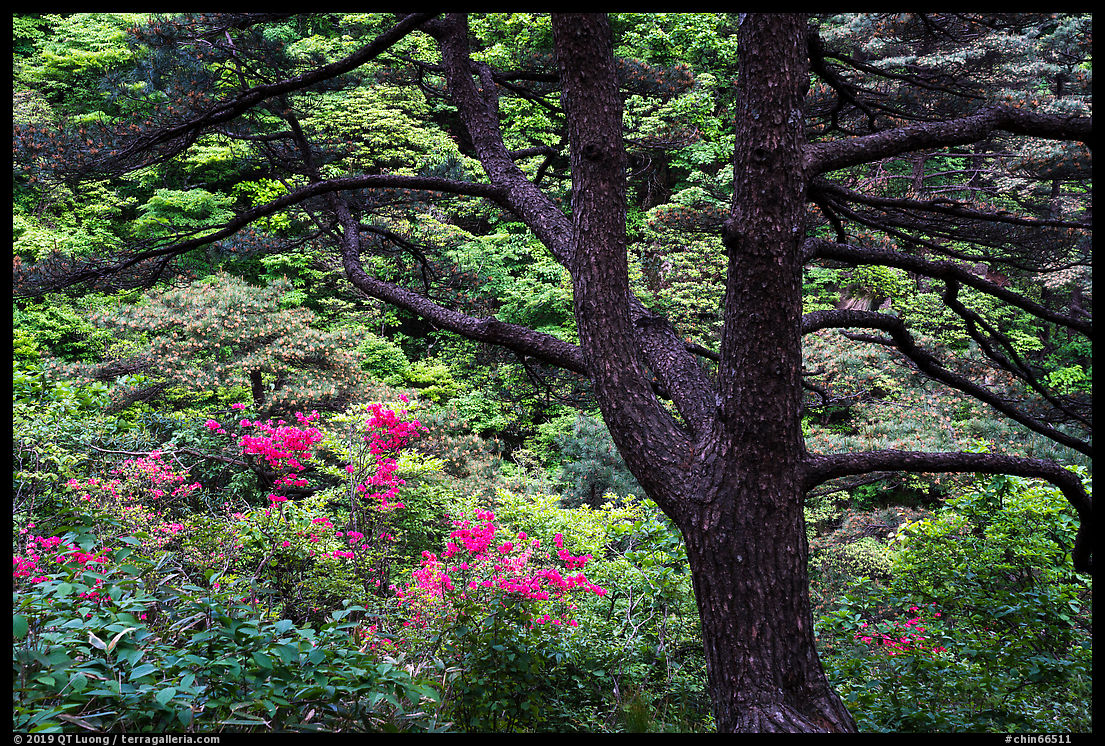
As the first day was mostly overcast and without low clouds, I focused mostly on the flora, especially the shurbs in bloom. We hiked in the late afternoon to Purple Cloud Peak. The scenery from there wasn’t great, but the location would have offered a view of the sun setting, and as such was quite popular despite the steep climb, even though the conditions were not promising at all. As expected, no color occurred at sunset. The second day was more clear, but it was still lacking low clouds. With no precipitation in the forecast for the next few days, and given the high cost of the hotel, we decided to spend only one night at the top.
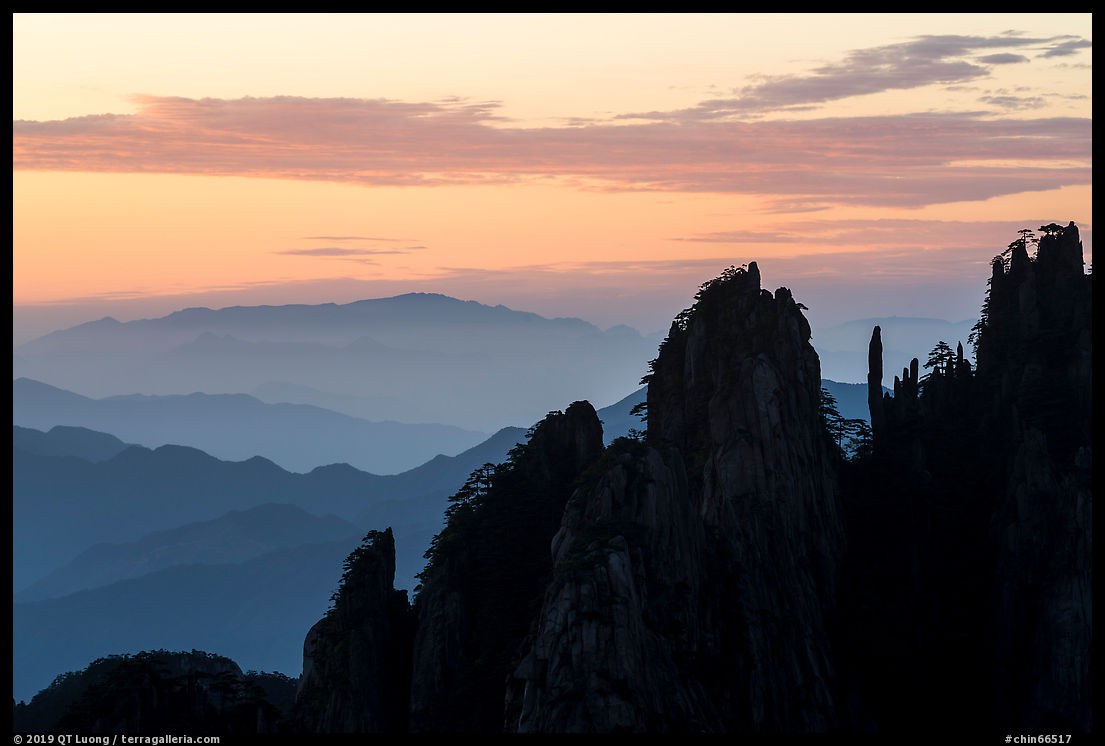
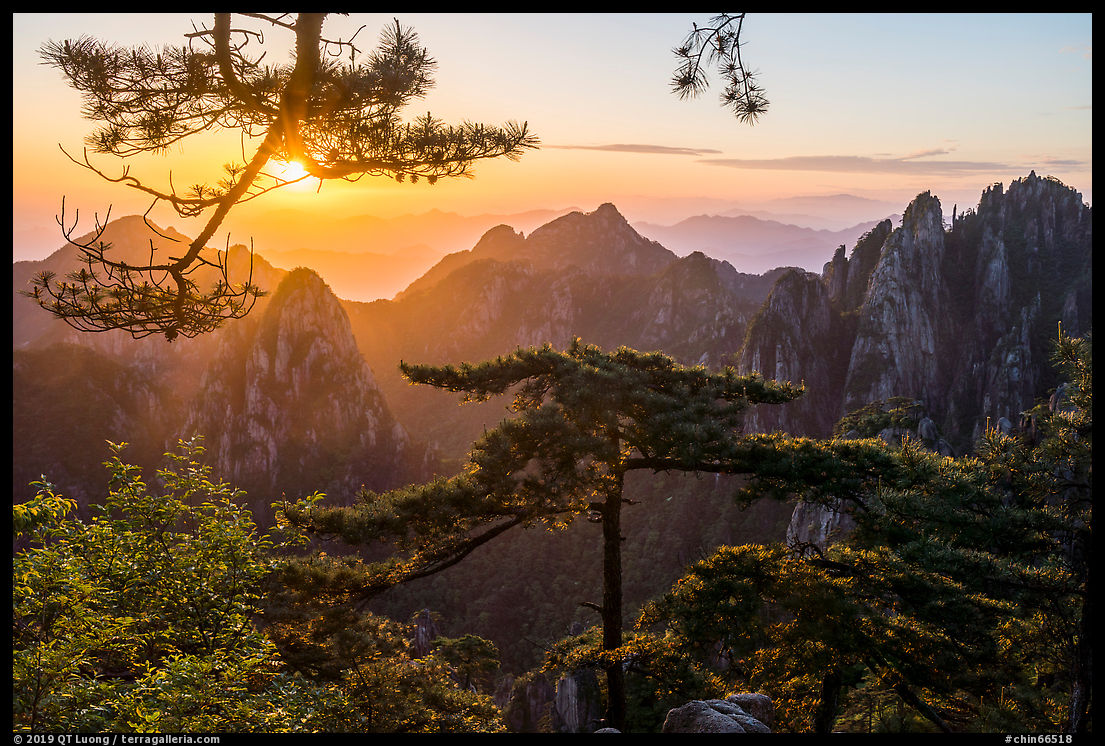
For sunrise, we went to the viewpoint named “A Monkey Gazing at the sea” after a characteristic rock, planning to arrive there half an hour prior to sunrise. This was a big miscalculation! A photographer in our party had already been to Yellow Mountain four times, and I assume that in his previous visits, such timing had proved adequate, but not this time, probably due to increasing popularity. As the viewpoint is less than fifteen minutes from the Beihai Hotel, the limited number of spots with a view of the eastern sky were already all staked. I had to content myself with a photograph in a different direction, isolating a few pinnacles with a telephoto lens. It looks like the other visitors were there to watch the sunrise. Merely a few minutes after the event, they began to leave, after which I was able to squeeze in and make a few photographs with some color in the eastern sky, although my compositions were limited by the available positions.
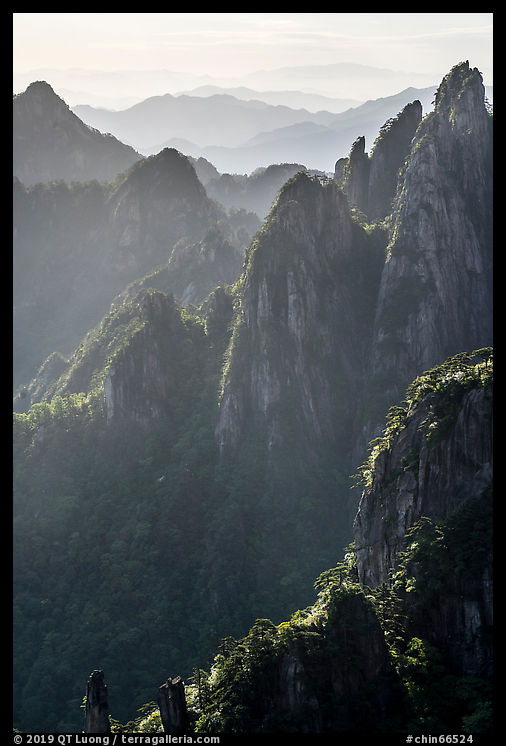
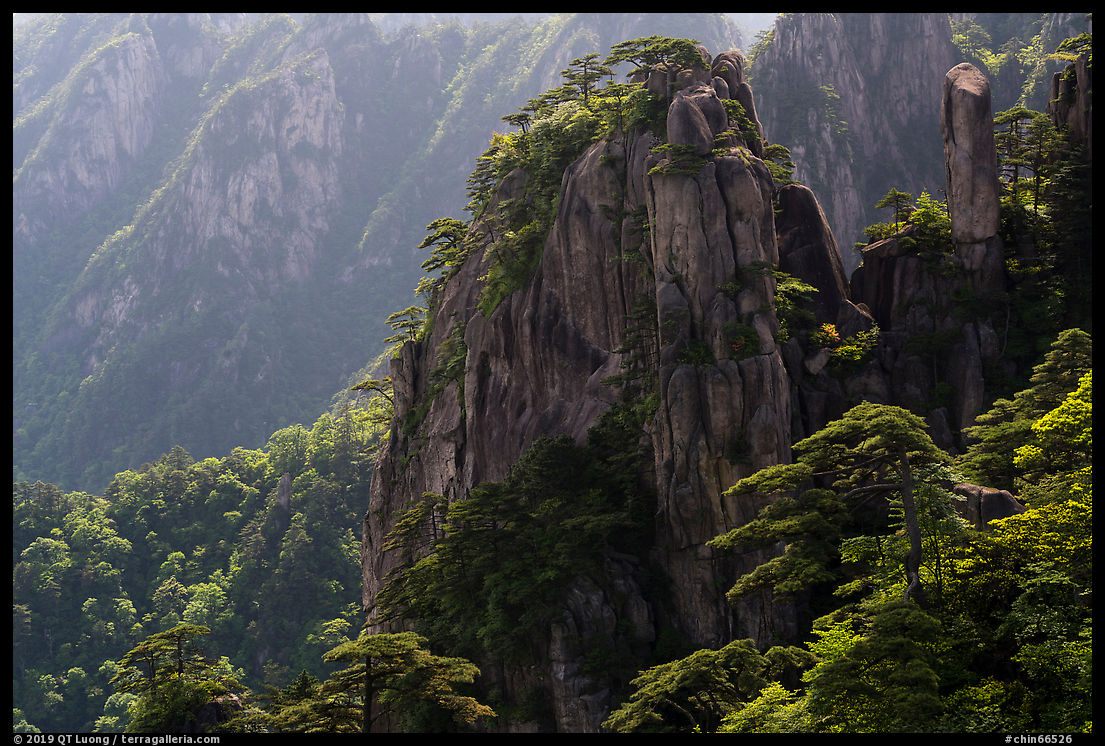
Half an hour after sunrise, the overlooks were mostly empty. I found that on this cloudless day, photographing backlit was the best way to create a bit of atmosphere thanks to the receding ridges. Backlight also helped emphasized characteristic shapes, both of the rock pinnacles and the uniquely local Pinus Huangshanensis which clings precariously clinging to cliffs.
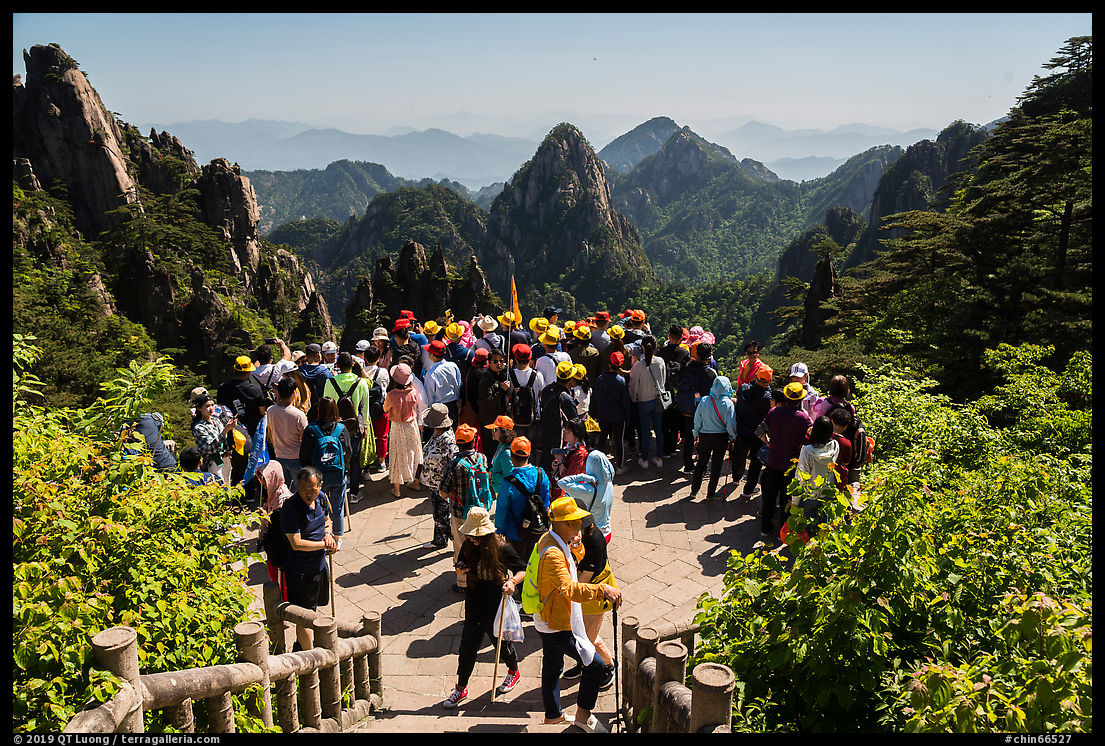
As the day progressed, crowds grew steadily again. Guides used amplified speakers to herd large tour groups. Cell phone service was working in most places, with a strong signal. When I made a phone call to my wife, with all the voices in the background, she thought that I was in some kind of public market rather than on the top of a mountain! Yosemite’s Mist Trail sounded quaint in comparison. It is ironic that all the misty images from Mount Huanghuan evoke the peace and solitude of nature, whereas the place, as the most famous mountain in China, is a prime example of a location overran by Chinese mass tourism. And this was a weekday in May. I can only imagine what a weekend of summer would have been.
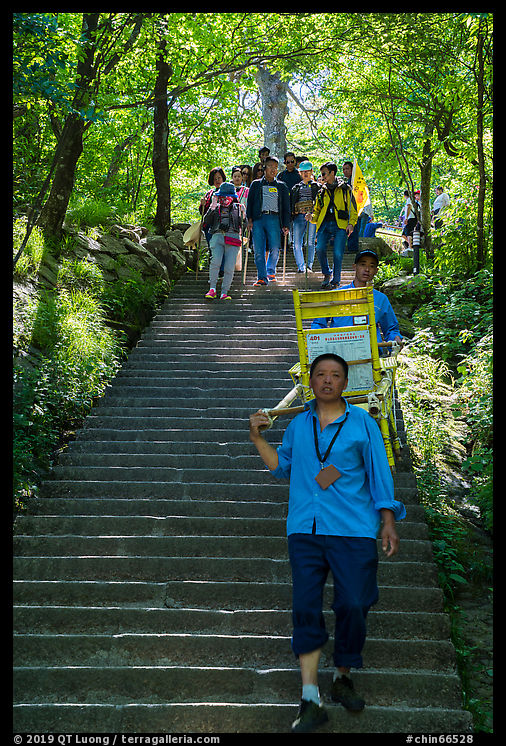
Besides the multiple cable cars and several large hotels at the top of the mountain complex, porters are available to carry luggage and even visitors on sedan chairs. They also shoulder all the food sold on the mountain, which may explain its high cost. Some tourists, instead of the hiking gear expected in such a place, wear chic clothing so they look good in photos. The trails are all paved with excellent craftmanship that includes guardrails, drainage system, and traction-maximizing texture. Compared to U.S. national parks, that level of development was striking and certainly contributes to the high visitation. On the other hand, erosion and litter were well-controlled, and it looks like the authorities have managed to achieve some level of protection for the place in spite of its popularity. The natural beauty remains extraordinary, even on a cloudless day.


Last time I visited the Yellow Mountains, the place was over run by tourists even on a cold and wet winter day. However, the iconic sea of cloud was in full display which made the crowded condition a bit more tolerable. Absolutely stunning.
If you like US National Parks, you may feel that this is an over developed, managed, and regulated tourist attraction, not pristine wilderness. I saw a team of sweepers removing fallen pine needles and debris off the meticulously crafted stone steps all day long. Not to mention the tight security measures and police presence.
Nevertheless, this is an extraordinary place of natural beauty and cultural significance, deserving of the World Heritage Site designation. Highly recommended.
I assume “run over by tourists” is all relative, and there must be some difference between winter and summer visitation. By contrast, some of the U.S. national parks that are so crowded in summer are quite quiet in winter.
I’m sure there is a difference between the summer and winter crowd size. However, for us photographers, this difference is likely moot. All popular sunset/sunrise viewpoints were as packed by photographers as the one depicted in your photo during my winter visit everyday. I guess there are close to 100M people (Shanghai alone is 27M) living within half a day of travel to the mountain.
This place has been heavily promoted as a year-round vacation destination. They also emphasize the fact that there is a higher probability of seeing the famous sea-of-cloud in the winter than in the drier summer.
I was tempted to venture outside of the established paths to discover unique viewpoints, but was warned against doing so by my Chinese friends.